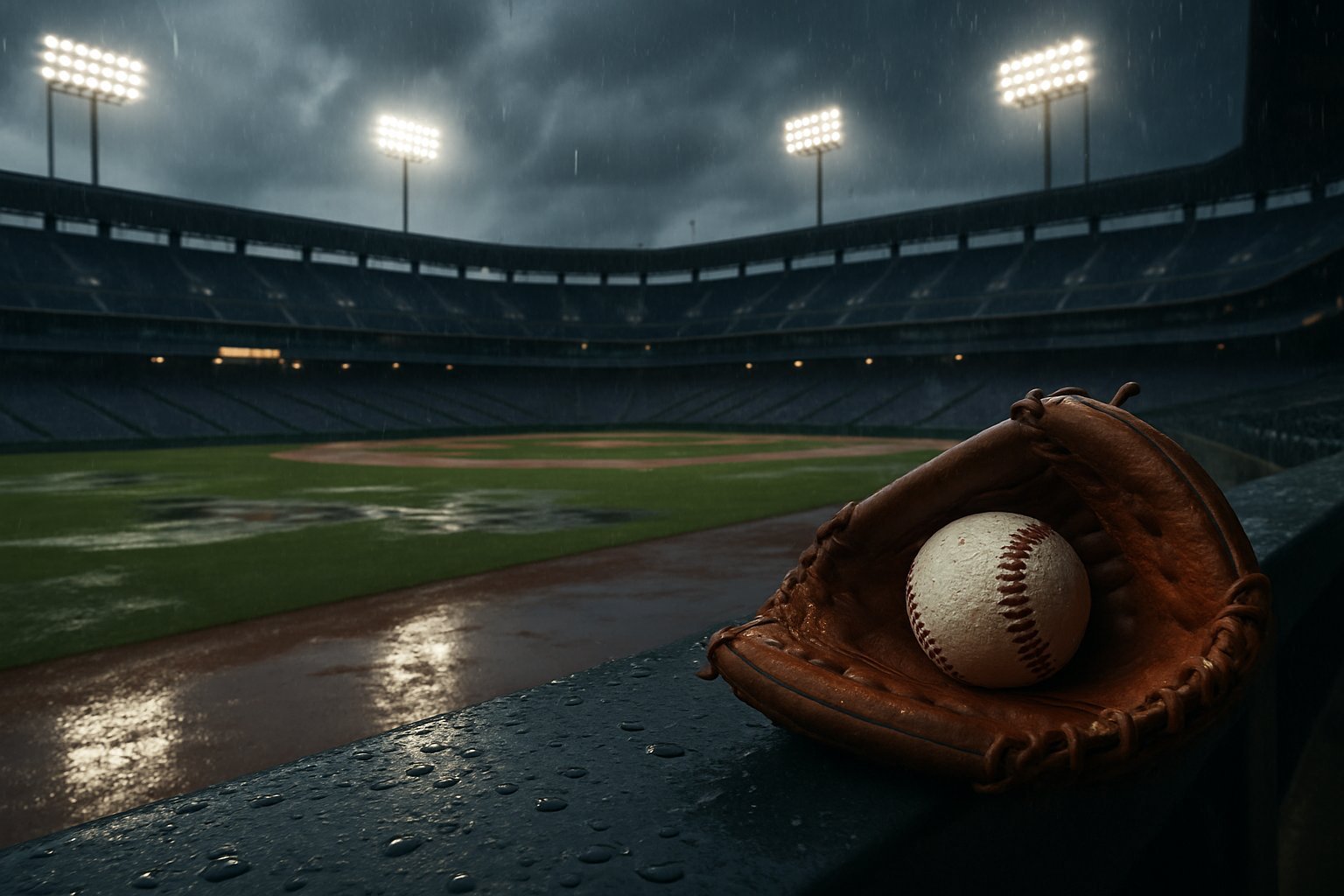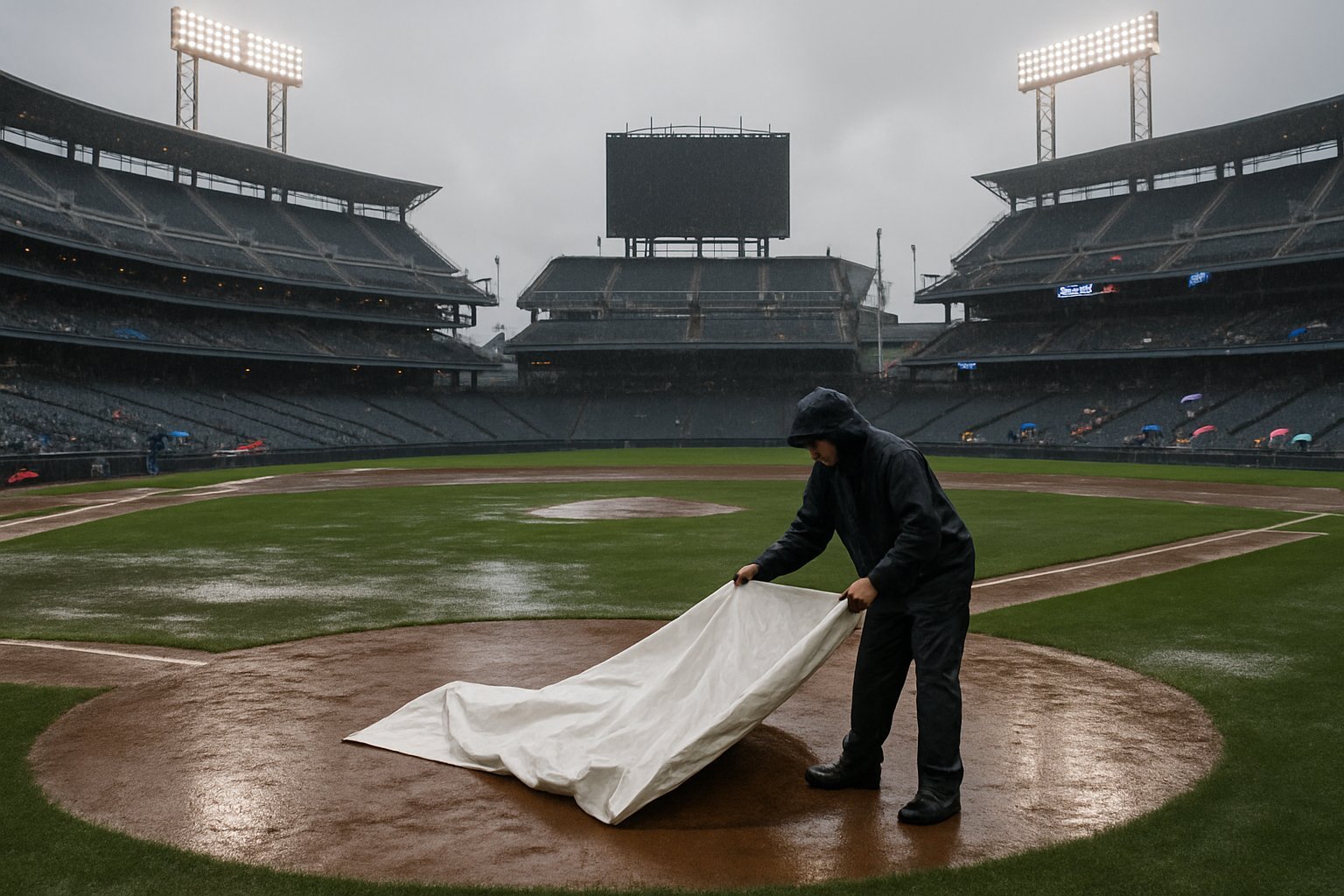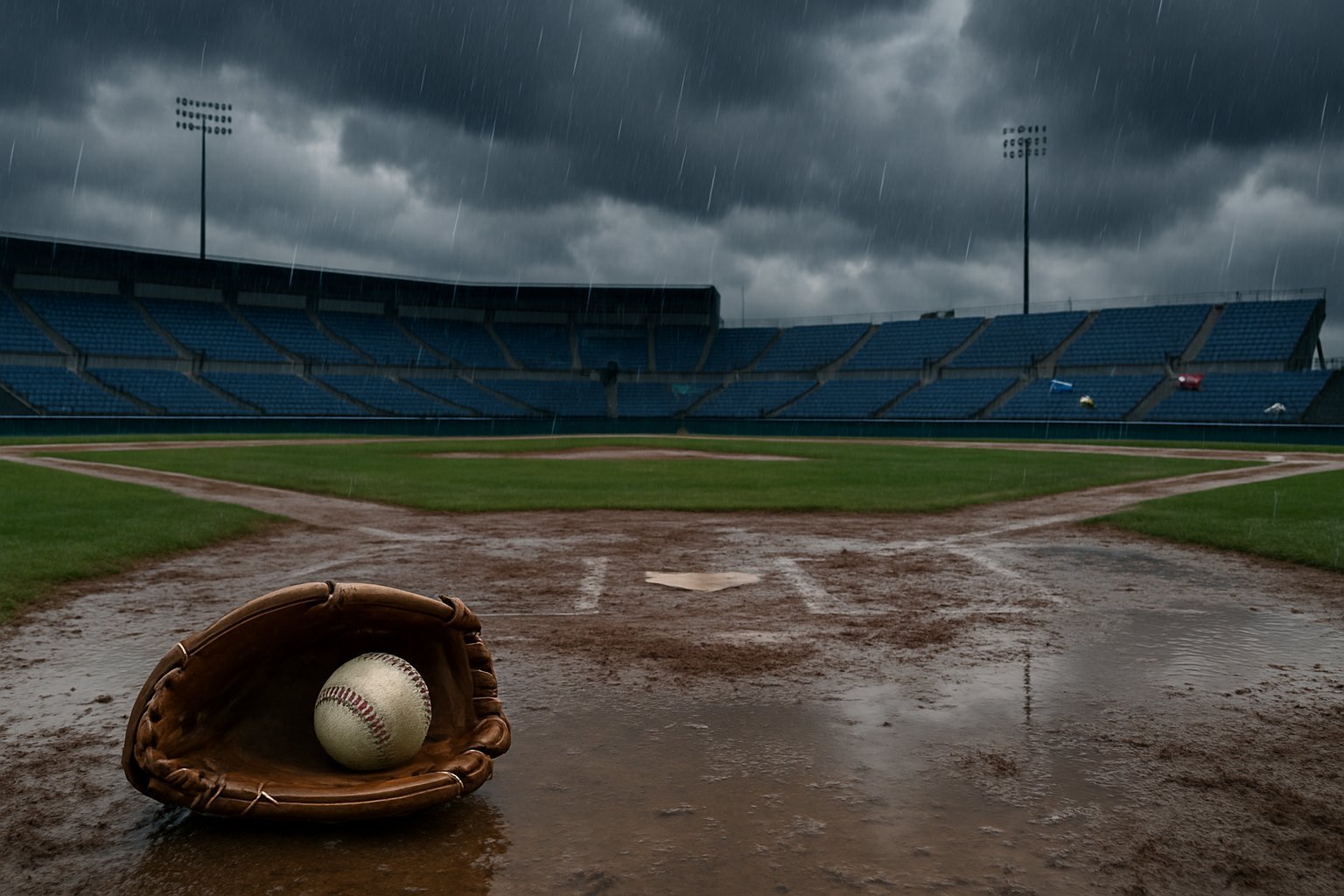Baseball games don’t just stop the second it starts to rain, but there are rules about when officials need to pause or postpone things. When rain causes a delay, officials wait at least 30 minutes to see if the weather clears before they decide to continue, postpone, or cancel the game. This helps keep things fair and safe for everyone.
These rules cover all kinds of situations, like delays before the game starts or interruptions after the first pitch.
Decisions depend on the weather and whether enough of the game has been played to call it official.
Knowing what’s going on can make watching or attending a game a lot less confusing.
Fans often want to know what happens when the rain just won’t quit.
The rules spell out what to expect and if games might continue the next day or get called off for good.
Here’s a quick look at how rain delays work in baseball and what you might want to know.
Key Takeaways
- Baseball rain delays require a wait before anyone makes a decision.
- Weather and how far the game’s gotten decide if it continues or gets postponed.
- Rain delay rules keep things fair and help protect players.
Understanding Baseball Rain-Delay Rules

Rain delays happen when the weather gets bad enough to pause the action.
A lot goes into these decisions, like player safety, the field, and how far along the game is.
It really helps fans and players to know who decides to stop the game and what the rules are about suspending play.
What Is a Rain Delay?
A rain delay means play stops for a while because of rain or bad weather.
It’s not the same as a canceled game.
Delays protect players and keep the field from turning into a mess.
During a rain delay, players usually hang out in the dugout while officials keep a close eye on the weather.
The length of a rain delay can be all over the place.
Sometimes the rain moves out quickly and the game picks back up.
Other times, the delay drags on if the weather just won’t let up.
If it goes on too long, different MLB rain delay rules kick in to figure out what happens next.
Role of Umpires in Rain Delay Decisions
Umpires get to make the final call on starting, pausing, or ending games when the weather gets ugly.
They keep checking the field and the sky to keep everyone safe.
Their job means checking if the field is safe for running and sliding, since wet grass and mud can cause injuries.
Usually, the crew chief leads these choices after talking with the other umpires and team managers.
They watch weather updates and use their experience to decide if play should go on.
They try to avoid giving any team an unfair edge or putting anyone at risk.
Criteria for Suspending Play
Umpires suspend play if rain or bad conditions make the field unsafe or if players can’t see well enough to play.
Major League Baseball rules also look at the timing.
If the game gets past the fifth inning and then stops for rain, it might count as an official game.
If they don’t make it that far, the game usually pauses and gets rescheduled from the start later.
Delays need to last at least 30 minutes to give the weather a chance to clear up before officials cancel or postpone the game.
Umpires also check forecasts to decide what’s best.
Difference Between Rain Delay and Rainout
A rain delay just means a temporary pause, while a rainout means the game is stopped and either canceled or postponed.
Rainouts usually happen if bad weather sticks around or the field can’t be made safe.
If a rainout happens before the game is official (usually before the fifth inning), the teams replay the whole thing later.
If it’s official, the score stands when the game stops.
Rainouts can mess with the schedule and lead to makeup games later in the season.
For more about baseball rain delay rules and the gear used during delays, check baseball equipment solutions.
Key Considerations and Scenarios in Rain Delays

Rain delays in baseball mean a lot of careful decisions about safety, gameplay, and the schedule.
The umpire and home team manager watch the weather and work together to decide if a game should pause, stop, or resume.
Things like visibility, lightning, and how long the delay lasts all matter.
Resuming Play After a Rain Delay
When rain pauses the game, the umpire waits to see if things get better before deciding to start up again. MLB rules say there’s at least a 75-minute wait during rain delays to check if it’ll clear up.
If the rain stops and the field looks good, players head back out.
The grounds crew pulls off the tarp, and officials check the field.
Games stopped before they become official—usually before five innings—get rescheduled and finished later.
If it’s already a regulation game, the score at suspension is used when play resumes.
Some of the longest rain delays in MLB history have lasted for hours, and sometimes teams finish the game on another day to keep things fair and safe for players.
Effects on Postseason and Makeup Games
In postseason games, rain delays get treated seriously since so much is at stake.
Delays might last longer, but the game usually needs to finish the same day if possible.
If the weather makes that impossible, MLB calls a suspended game.
Postseason games almost never get called complete early since nobody wants an unfair result.
For regular-season rainouts, teams plan makeup games based on the schedule and the weather.
Sometimes they play doubleheaders to catch up.
Decision-makers think about player health, field conditions, and the MLB calendar to make sure the game gets finished the right way.
Role of Retractable Roofs in Weather Management
Retractable roofs have really changed how teams handle bad weather.
They let games keep going during heavy rain or lightning, so there are fewer delays and rainouts.
Stadiums with retractable roofs can close up fast when weather turns bad, keeping players and fans dry.
That also helps everyone see better and keeps the field safer.
Even with a roof, sometimes play stops for lightning or other safety reasons.
Retractable roofs cut down on rainouts, but they don’t get rid of weather problems completely.
More and more teams use roofs now, and it’s a big help for managing rain delays and keeping the game moving.
Frequently Asked Questions
Rain delays shake up game timing, player stats, and how officials decide to keep going or stop.
The rules explain when games become official, how long delays can last, and who gets to make the call.
What determines an official game in case of a rain delay?
A game counts as official if at least five innings are finished, or four and a half if the home team is ahead.
If it stops after that, the current score stands as the final.
How long can a rain delay last before a game is postponed or suspended?
There’s no exact maximum for a rain delay.
The umpire crew decides based on the weather and the field.
Delays can go on for an hour or more before they choose to suspend or postpone.
At what point during a game is a rain delay likely to lead to a reschedule?
If the game stops before it’s official (before five innings), it usually needs to be resumed or replayed later.
If it’s after the official point, the game might end or get called complete.
Who has the authority to call for a rain delay in a professional baseball game?
The home plate umpire makes the final call for a rain delay.
They work with other umpires and officials to check the weather and field before stopping play.
What are the specific rules for resuming play after a rain delay?
Play picks back up when the umpire crew says the weather and field are safe.
The same players return to the field unless there were substitutions or pitching changes before the delay.
What happens to player stats and records if a baseball game is called off due to rain?
If the game has reached official status when it gets called off, all the stats still count like usual.
If it isn’t official, the teams might replay the entire game, and nobody keeps the stats from the stopped game.
